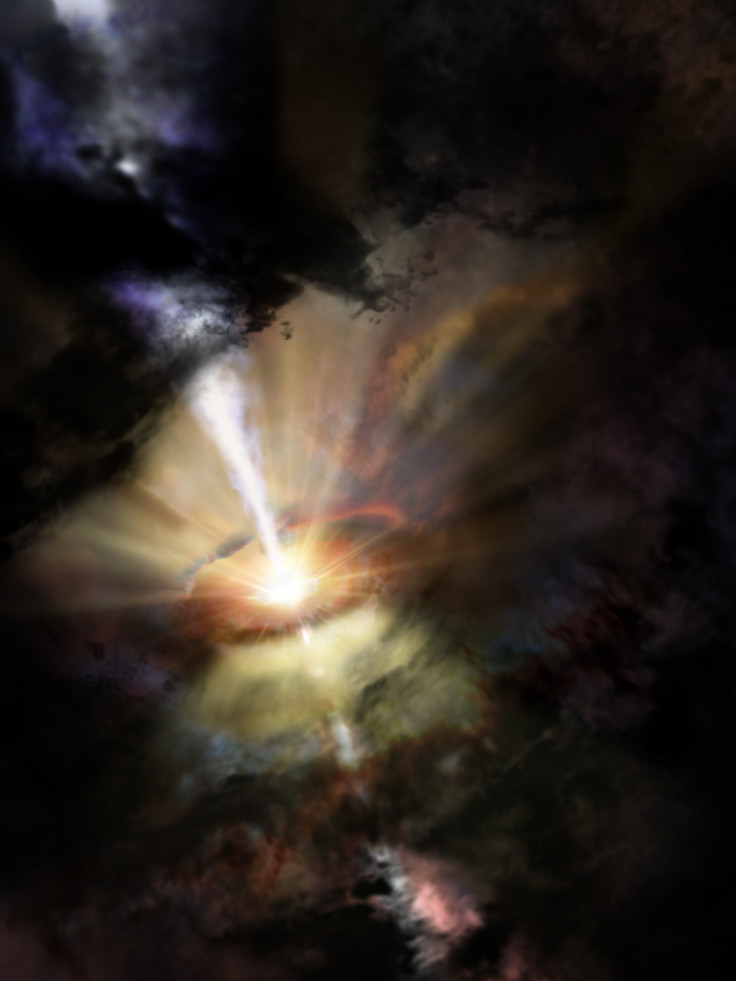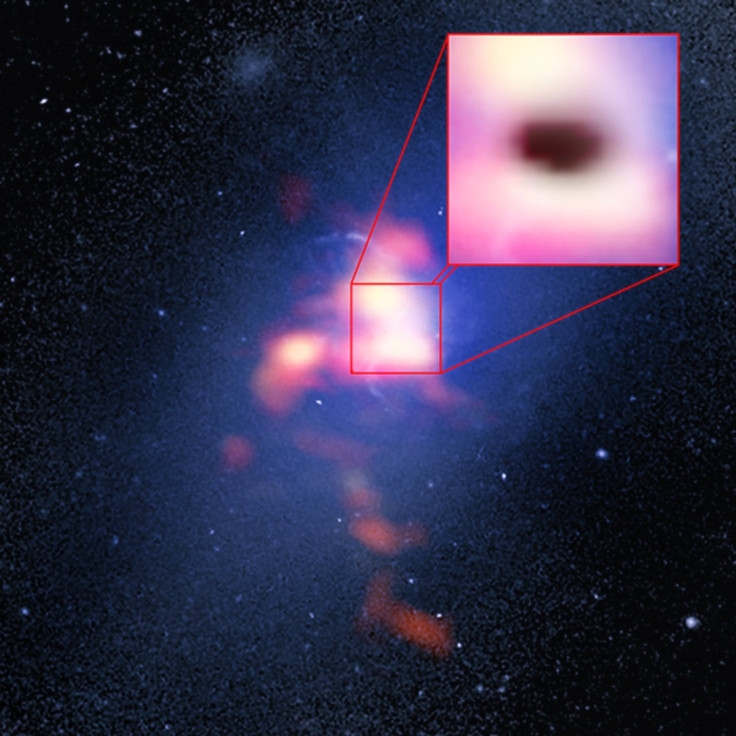Supermassive black hole in cold gas feeding frenzy observed one billion light years away
A supermassive black hole in a feeding frenzy of cold clumpy gas has been observed in a galaxy one billion light years away. Scientists who made the discovery said it helps us understand supermassive black holes "in a way that has never been possible before".
Black holes at the centres of galaxies grow by consuming gas in a process known as 'accretion'. Previously, it was thought they fed on hot ionized gas from the galaxy's halo in a smooth and steady inflow.
Using one of the most powerful telescopes in the world – Alma, located in Chile – researchers have now shown this is not the case. Instead, their observations showed that under certain conditions, black holes can feast on clumpy, cold molecular gas in a chaotic manner. Their findings, published in the journal Nature, show that under certain conditions, huge amounts of cold gas can be consumed if and when it passes nearby.
The international team of scientists looked at an unusually bright cluster of galaxies, the most massive of which is an elliptical galaxy called the Abell 2597 Brightest Cluster Galaxy. Between the galaxies in the cluster is hot ionised gas.

"This very, very hot gas can quickly cool, condense and precipitate in much the same way that warm, humid air in Earth's atmosphere can spawn rain clouds and precipitation," lead author Grant Tremblay said.
Their never-before-seen observations showed three massive clumps of cold gas moving towards the black hole at speeds of up to 800,000 miles per hour. At present, the clouds were around 300 light years from the black hole – sitting right on the edge, ready to be gobbled up. "The newly condensed clouds then rain in on the galaxy, fuelling star formation and feeding its supermassive black hole," Tremblay added.
"Although it has been a major theoretical prediction in recent years, this is one of the first unambiguous pieces of observational evidence for a chaotic, cold rain feeding a supermassive black hole."

Study co-author Michael Macdonald said: "This diffuse, hot gas is available to the black hole at a low level all the time, and you can have a steady trickle of it going in. Every now and then, you can have a rainstorm with all these droplets of cold gas, and for a short amount of time, the black hole's eating very quickly. So the idea that there are these two dinner modes for black holes, is a pretty nice result."
Timothy Davis, who was involved in analysing the Alma data, added: "It was magical being able to see evidence of these clouds accreting onto the supermassive black hole. At that very moment, nature gave us a clear view of this complicated process, allowing us to understand supermassive black holes in a way that has never been possible before."
Researchers now plan to search for these black hole feeding frenzies in other galaxies to see if it is a common processes in accretion.
© Copyright IBTimes 2025. All rights reserved.






















